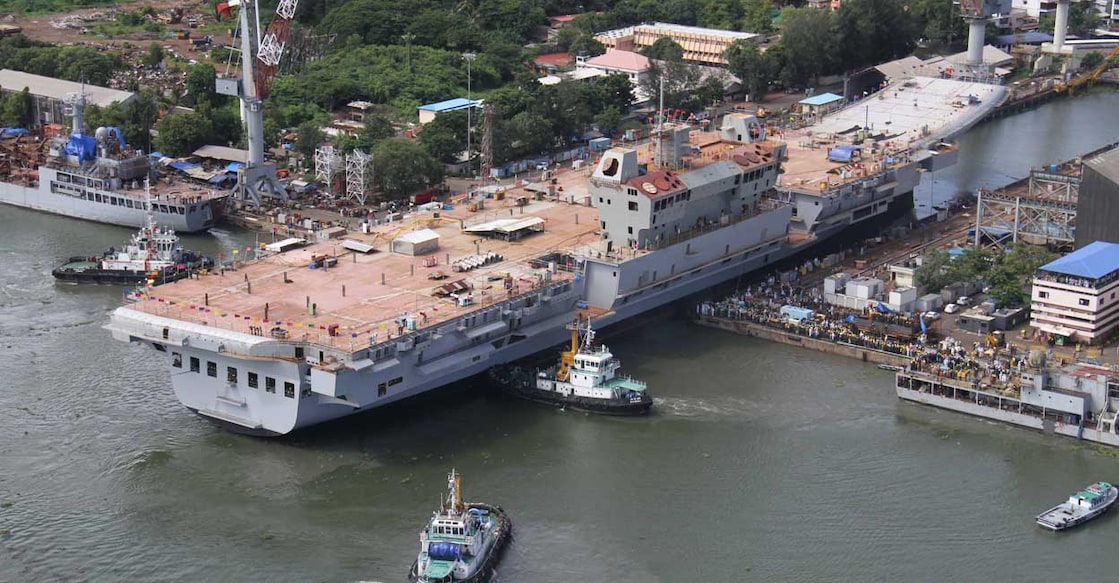Column | When Cochin met Bombay’s 19th century demand for ships

Mail This Article
Before the advent of the steamship transformed navigation to and from Indian ports in the 1820s, many places in the country had a booming shipbuilding industry. Bengal was at the forefront of innovation around the time the East India Company began to occupy large parts of India.
On the west coast, Mumbai, then Bombay, became a major shipbuilding centre in the 19th century, but the Bombay Dockyard did not have the capacity to meet growing demand by itself. This led stakeholders in the industry to give shipbuilders in Surat, Pegu (now Bago, Myanmar), Manilla and present-day Kerala a chance.
According to a list of ships registered in the port of Bombay, released by the Bombay Gazette on July 31, 1819, more than 25 per cent were built in Kerala. They primarily came from Cochin and Beypore.
It is a well-known fact that Beypore’s shipyards made urus or dhows, which were in high demand in Arabian countries. In 1819, Bombay had two ships that were made in the ancient port near Kozhikode - the 400-ton Francis Warden, which had a crew of 55, and the 300-ton Malabar with a crew of 45. Bombay also had one ship that was made in Alappuzha, named Mira Ketch.
Built in Cochin
All the other ships from Kerala were built in Cochin. The oldest of the lot was the 750-ton Castlereigh, which was commissioned in 1802. Most of the other ships were built around 1816, showing a great demand at that time.
None of these Bombay ships were owned by Malayalis. The register shows British, Gujarati and Parsi names as proprietors of the vessels built in Kerala. The officers on the ships were European, while the gunners were Indian Christians and the lascars (sailors) were Indian Sunni Muslims. During this period, some pioneering Malayalis migrated to Bombay to work in the dockyards, but it is unlikely that they were employed on board the ships that were made in their homeland.
Today, Kochi is home to the Cochin Shipyard, the largest facility for shipbuilding and maintenance in India, but this facility was founded only in 1972. The city has a much longer history of shipbuilding that even predates the arrival of the Portuguese.
In the 1660s, the Dutch East India Company (VOC) established a shipyard in Cochin.
"At this yard, the VOC experimented with building ocean-going ships until the management of the company decreed that these were to be built solely in the Dutch Republic itself," historian Erik Odegard wrote in the International Journal of Maritime History in 2019. “During the first half of the eighteenth century, the yard focused on the repair of passing Indiamen and the construction of smaller vessels for use in and between the VOC commands in Malabar, Coromandel, Bengal and Sri Lanka.”
The shipbuilding facilities in Cochin were used by the British East India Company forces, who evicted the Dutch in 1795. Odegard added that British naval frigates were built in Cochin in the early 19th century.
Unfortunately a lot of information about the wooden ship industry in Cochin has been lost.
“Ample historical proof exists of shipbuilding yards in Kochi and nearby islands, and that ships built in Kochi were well-received in Europe,” writer and cartoonist Bony Thomas wrote in Sahapedia. He, however, added that there was no trace of a shipbuilding yard in present-day Kochi that produced wooden ships.
It was in the now-vanished shipyards of Cochin that ships were made for Bombay at that time. The largest Cochin-built ship in the city in 1819 was the 820-ton Glenelg, which was built in 1817 and had a crew of 116. It was owned by a company called Remington, Crawford & Co. The notice in the July, 1819, edition of the Bombay Gazette said two more ships were being built in Cochin at that time and would be “shortly added to the tonnage of the port.”
The wooden shipbuilding industry in Cochin most probably went into decline in the 1830s when large metallic steamships became the preferred mode of maritime transportation.
Bombay’s links with Cochin and other places in Kerala continued to grow in the 19th and 20th centuries, and the city became a dream destination for Malayali immigrants who arrived in search of opportunities.
(Ajay Kamalakaran is a multilingual writer, primarily based in Mumbai)


